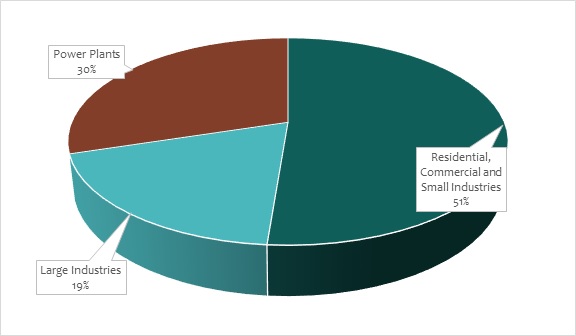 Prepared by: Sahar Mozafarian of SGPM
Prepared by: Sahar Mozafarian of SGPM
This winter has proven to be problematic for Iran in more ways than one. At present, the main issue that is the point of conversation in social circles as well as the media is the stress this sudden cold front is putting on the country’s gas supplies. This winter has been the coldest in the past decade, with temperatures reaching -28 Celsius in the northwest of the country.
Although Iran has the second largest gas reserves in the world, production is not to its full potential. There are many factors that have contributed to limited gas production in Iran including mis-management, corruption, geo-political tensions, sanctions, lack of foreign investment as well as limited domestic technical knowhow. With the aim of freeing up petroleum for exports, Iran implemented a drive to change petroleum-fueled power plants and industrial complexes to dual use or gas consuming ones. This has led to a surge in gas consumption as an energy source with latest figures suggesting it stands at over 70%.
Chart1: Iran’s Primary Energy Consumption Share 2021

Source: EIA
In addition, the national supply network of natural gas has increased significantly; with many villages and rural areas being connected to the national grid. Along these lines, population growth as well as a rise in the number of homes and households has also led to heightened demand for gas within the country.
With this said, the natural gas network infrastructure and production has not been developed in the same line as the rising demand.
for peak in demand has not been up to speed and it is in critical times like these that a light is shone on the shortcomings regarding management and decisions of previous and current administrations. In fact, the Majlis Industries and Mines Committee stated that Iran’s gas industry requires some $60 BLN of investment. Considering the current circumstances surrounding the country; it is far-fetched that this volume of investment can be made any time soon. This comes as the government is continuing to pursue the construction of pipeline in rural areas to connect to the national gas grid, despite the supply issues they are tackling at present. The Ministry of Petroleum recently announced that $77 MLN has been earmarked in the 1402 Budget (2023-2024) for connecting villages to the gas grid as well as the completion of ongoing gas connection projects. It is worth noting that gas consumption during the year ending March 2022 stood at 238.5 BLN CM; an increase of 5 BLN CM compared to the previous year.
Chart2: Share of Gas Consumption Per Sector March 2021-2022

Source: National Iranian Gas Company (NIGC)
A little under 850 MLN CM/d of natural gas is currently being produced in Iran, 67% of which is from the South Pars Gas Field. The major consumer of gas in Iran is the residential and commercial sector who account for roughly 80% of consumption during the cold weather spells. In fact, on 14 January 2023, residential and commercial consumption stood at 633 MLN CM/d, an increase of 150 MLN CM/d compared to the winter of 2022. The areas most affected by the cold spells are in the north east of the country; where they are facing temperatures of up to -20 Celsius in recent days.
In addition to advising citizens to optimize consumption, wear warmer clothes at home and set their homes to 18-21 degrees Celsius; another method the government has put into place for reducing gas consumption is the closure of public companies and institutions. According to the NIGC, these closures reduce consumption by some 25 MLN CM/d. However, one must take into account that Iran’s per capita energy consumption stands at approximately 4,000 KG of oil equivalent, less than a third of Singapore and half of Kuwait and on par with Slovakia and France. Therefore, the government rhetoric that per capita energy consumption of Iranians is the reason behind the shortfalls in gas supply are not accurate. Dated pipelines and infrastructure, low efficiency in power plants and electricity lines, lack of foreign and local investment, cheap gas prices and very limited utilization of renewable energy sources despite huge potentials are only a handful of reasons Iran is in this current gas supply shortage dilemma. It remains to be seen how gas supply in Iran will withstand this cold winter and whether the closure of government institutions, schools, universities, and factories will result in no further gas cuts for the residential sector.
Sources: Borna News, EIA, Fars News, ISNA, NIGC, SGPM, SHANA, Tasnim
